Sistemas complexos e o problema das mudanças do clima | Nobel Física 2021
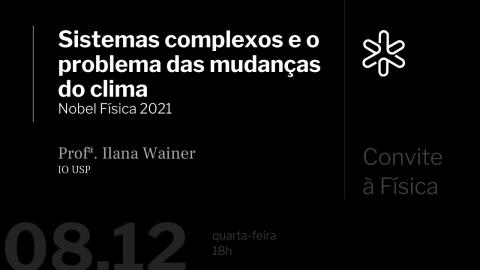
Confira em: https://youtu.be/9hd74GqI8pU

Confira em: https://youtu.be/9hd74GqI8pU
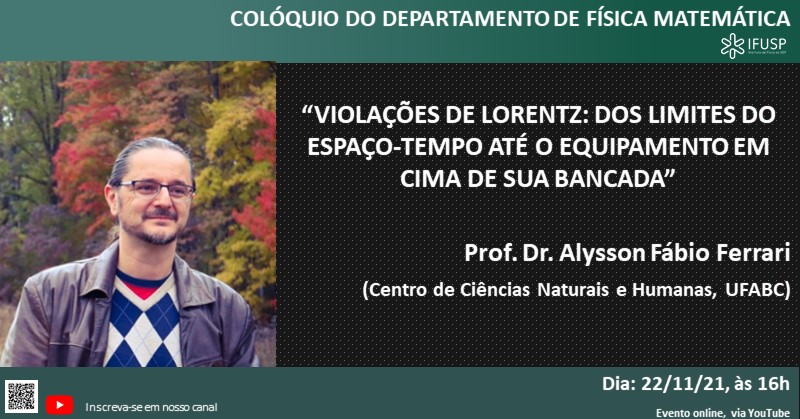
Transmissão ao vivo via YouTube
Resumo: A simetria relativística é um dos pilares da física contemporânea e, justamente por isso, um dos princípios físicos mais bem estabelecidos. Apesar disso, a busca por sinais de violações dessa simetria tem sido uma área de pesquisa bastante ativa nas últimas duas décadas, tanto do ponto de vista teórico quanto experimental. Qual a motivação por trás desse interesse? Que tipo de resultado tem sido obtido com base nesse empreendimento? Nesse colóquio, apresentarei um panorama geral dessa área de pesquisa, destacando algumas possíveis consequências interessantes para o estudo da Relatividade Geral e da Física da Matéria Condensada
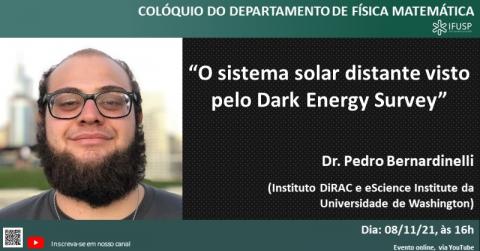
Transmissão ao vivo via YouTube
Resumo: Nesta apresentação, discutiremos os resultados de uma busca por objetos no sistema solar distante realizada com o Dark Energy Survey (DES). Esta busca levou à identificação de mais de 800 objetos, sendo 600 deles novos, incluindo C/2014 UN271 (Bernardinelli-Bernstein), o maior e mais distante cometa originário da Nuvem de Oort já identificado. Apresentaremos o processo de descoberta desses objetos que, dada a estratégia observacional do DES, foi uma tarefa com uma exigência computacional extrema, necessitando de 15 a 20 milhões de horas de CPU. Também caracterizaremos o cometa B-B, detalhando os argumentos observacionais que indicam seu tamanho incomum, além de sua história dinâmica e propriedades de sua superfície, comparando-o a outros cometas distantes. Por fim, discutiremos também como os objetos descobertos pelo DES se encaixam na história dinâmica da formação dos planetas gigantes e enfraquecem a hipótese da existência de um nono planeta ainda não descoberto no Sistema Solar.
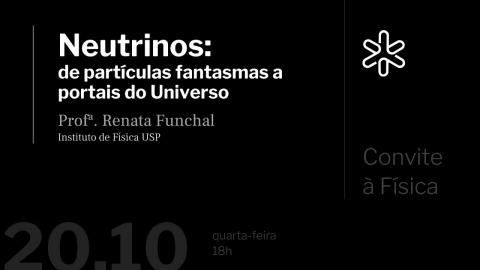
Confira em: https://youtu.be/pWkXMQh5Dxo
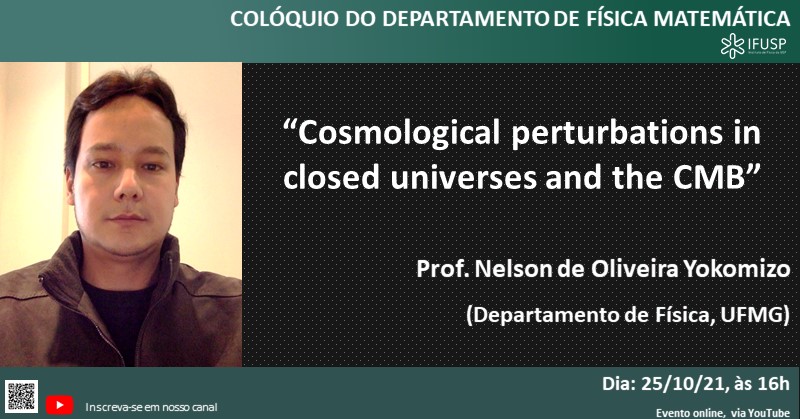
Transmissão ao vivo via YouTube
Resumo: We investigate the evolution of gauge invariant quantum perturbations in the closed FLRW model in the
presence of an inflationary potential. We first determine initial conditions for the background dynamics which lead to a desired slow-roll phase that is compatible with observations. Providing the initial conditions for the quantized perturbations at the onset of inflation we study the influence of the spatial curvature on the scalar and tensor power spectra at the end of inflation. We determine the implications of the modifications of the primordial power spectra due to the presence of spatial curvature to the CMB spectra and compare our results with the Planck data. We highlight the main differences from the standard inflationary scenario in a flat FLRW model.
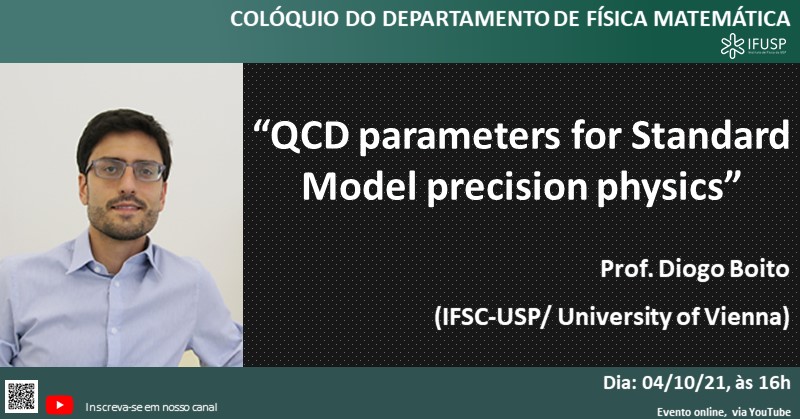
Transmissão ao vivo via YouTube
Resumo: The theoretical precision of many crucial observables in the Standard Model is nowadays limited by our knowledge of QCD parameters. This is the case, for example, in Higgs physics. Determining the strong coupling and quark masses with smaller uncertainties is therefore a fundamental task in order to match the reduced errors expected on the experimental side with the advent of future facilities, such as the FCC-ee and HL-LHC. Obtaining the QCD parameters is not a straightforward task, since they are not physical
observables, as they depend on renormalization conventions: theory input is as important as experimental data. I will discuss recent developments in the precise determination of the strong coupling and heavy-quark masses, with emphasis on taming the intrinsic error associated with the truncation of the perturbative series in QCD and its interplay with non-perturbative physics.
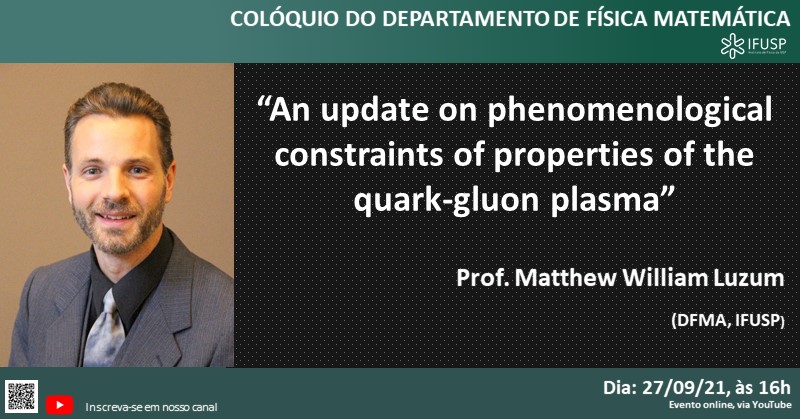
Transmissão ao vivo via YouTube
Resumo:
At extremely high temperature, there exists a deconfined state of matter known as the quark-gluon plasma (QGP), where color degrees of freedom are liberated. In order to achieve the necessary temperature to study the QGP experimentally, heavy nuclei are collided at ultrarelativistic energies, and measurements made. In this colloquium I review recent progress in determining properties of the QGP from relativistic heavy ion collision data -- specifically, a recent verification of deconfinement and the liberation of color degrees of freedom via the QGP equation of state, and recent developments using Bayesian inference to extract the shear and bulk viscosities of the QGP.
Referências:
Nature Phys. 16 (2020) 6, 615-619 (arXiv:1908.09728)
Phys.Rev.C 103 (2021) 5, 054904 (arXiv:2011.01430)
Phys.Rev.Lett. 126 (2021) 24, 242301 (arXiv:2010.03928)
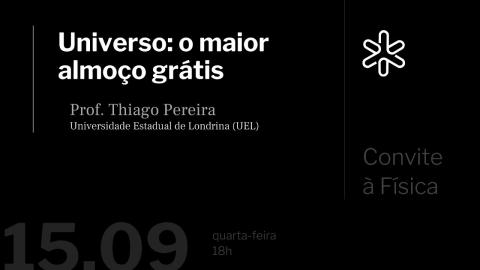
Confira em: https://youtu.be/0BTw4ggMOpE
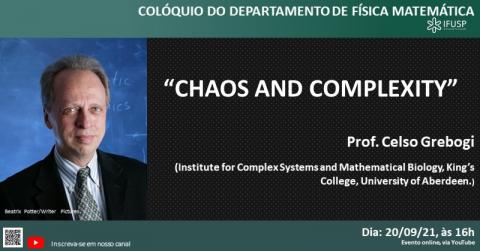
Transmissão via YouTube
Resumo: Many simple nonlinear deterministic systems can behave in an apparently unpredictable and chaotic manner. This realisation has broad implications for many fields of science. Some basic concepts and properties in the field of chaotic dynamics of dissipative systems will be reviewed in this talk. I will use some of these properties in application topics, including the control of chaos in the heart and in the brain. I will then go a step further by arguing that a complex system are made up of many states that are interrelated in a complicated manner. The ability of a complex system to access those different states, combined with its sensitivity, offers great flexibility in manipulating the system’s dynamics to select a desired behaviour. Another important issue is the question of mathematical modelling of chaotic and complex systems, including complex networks. Mathematical modellers of such systems need to understand and take seriously the question of their own limitations.
Controlling complexity, L. Poon and C. Grebogi, Phys. Rev. Lett. 75, 4023 (1995).
Controlling Chaotic Dynamical Systems, C. Grebogi and Y. C. Lai, Systems Control Lett. 31, 307 (1997).
Data Based Identification and Prediction of Nonlinear and Complex Dynamical Systems, W.-X. Wang, Y.-C. Lai, and C. Grebogi, Phys. Reports. 644, 1-76 (2016).
Relativistic Quantum Chaos, L. Huang, H.-Y. Xu, C. Grebogi, and Y.-C. Lai, Phys. Reports 753 1-128 (2018).
Sudden Regime Shifts After Apparent Stasis, C. Grebogi, Phys. of Life Reviews 32, 41-43 (2020).
Tipping Point and Noise-induced Transients in Ecological Networks, Y. Meng, Y.-C. Lai, and C. Grebogi, J. Royal Soc. Interface 17, 20200645 (2020).
Machine Learning Prediction of Critical Transition and System Collapse, L.-W.Long, H. Fan, C. Grebogi, and Y.-C. Lai, Phys. Rev. Research 3, 013090(1-14)
(2021).
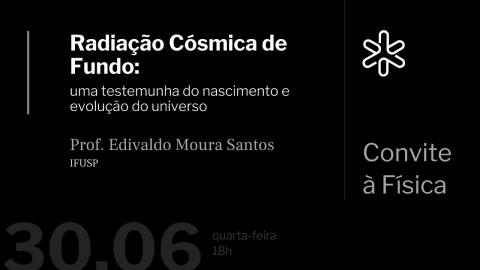
Confira em: https://youtu.be/aC_0PfDqibI